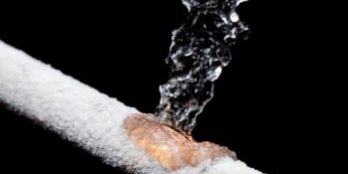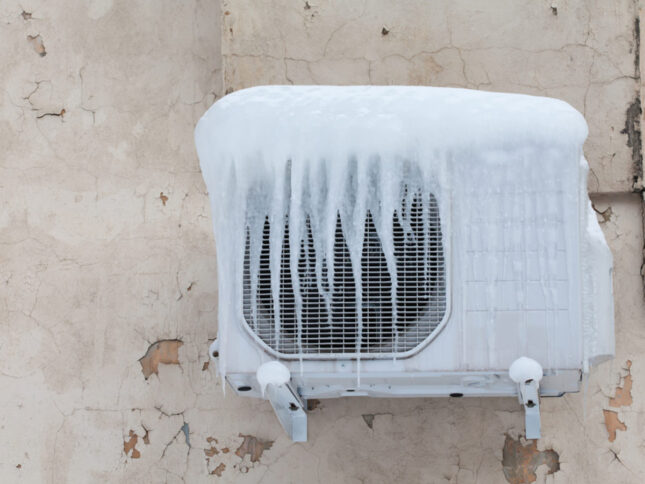Handling a Frozen AC Pipe: Successful Techniques
Handling a Frozen AC Pipe: Successful Techniques
Blog Article
They are making a number of good points on the subject of Have a Frozen AC Line? Here’s How to Fix It in general in this article underneath.

Intro
Uncovering that your AC pipe is frozen can be worrying, particularly during warm summertime when you rely upon your air conditioning unit one of the most. Recognizing what to do in such a scenario is vital to stop more damages to your cooling system and ensure your convenience inside.
Recognizing the Causes
A number of elements can contribute to the freezing of an air conditioner pipeline. Comprehending these reasons can aid you resolve the concern successfully.
Lack of Airflow
One usual root cause of an icy air conditioning pipeline is inadequate air flow. When the airflow over the evaporator coil is limited, it can trigger the coil to go down below freezing temperature, leading to ice development on the pipeline.
Low Refrigerant Levels
Not enough cooling agent degrees in your air conditioning system can additionally cause a frozen pipeline. Reduced cooling agent degrees can trigger the pressure in the system to go down, causing the cold of moisture on the evaporator coil.
Winter Conditions
In chillier climates, freezing temperatures outside can contribute to the freezing of AC pipelines. If your air conditioner system is not correctly protected or if there are leakages in the ductwork, chilly air can infiltrate the system, causing the pipe to ice up.
Dirty Air Filters
Filthy or clogged up air filters can limit air flow in your a/c system, causing different concerns, consisting of a frozen pipe. It's essential to change or cleanse your air filterings system on a regular basis to make sure proper air flow and prevent ice build-up.
Indications of a Frozen AC Pipe
Identifying the indicators of a frozen air conditioner pipe is critical for timely action.
Lowered Airflow
If you discover a substantial decrease in air flow from your vents, it can indicate a frozen pipe.
Ice Buildup on the Pipe
Noticeable ice build-up on the refrigerant line or the evaporator coil is a clear indication of a frozen AC pipe.
Strange Sounds from the Unit
Unusual audios, such as hissing or bubbling, coming from your AC unit can indicate that there's ice present on the pipe.
Immediate Actions to Take
When faced with an icy a/c pipe, it's important to act swiftly to avoid further damages to your air conditioning system.
Shutting off the AC
The first step is to switch off your ac system to stop the system from running and worsening the issue.
Looking for Blockages
Examine the location around the indoor system for any obstructions that might be blocking air flow, such as furnishings or curtains.
Defrosting the Pipe
You can make use of gentle techniques like positioning towels soaked in cozy water around the frozen pipe to aid thaw it slowly.
Safety nets
Taking safety nets can aid prevent future events of a frozen air conditioner pipe.
Routine Maintenance Checks
Set up routine upkeep consult a specialist HVAC professional to make sure that your air conditioner system is running efficiently.
Altering Air Filters
Regularly replace or clean your air filters to avoid air movement constraints and maintain optimal performance.
Protecting Exposed Pipes
If your a/c pipelines are subjected to chilly temperature levels, take into consideration shielding them to stop cold throughout cold weather.
Looking For Professional Help
If DIY approaches stop working to settle the concern or if you're uncertain concerning exactly how to proceed, it's finest to look for help from a certified HVAC technician.
When DIY Methods Fail
If your efforts to thaw the pipeline or address various other issues are unsuccessful, it's time to employ a professional.
Value of Hiring a Professional HVAC Technician
A qualified HVAC technician has the know-how and devices necessary to diagnose and repair issues with your air conditioning system safely and successfully.
Final thought
Taking care of an icy a/c pipe can be a discouraging experience, however understanding exactly how to respond can help decrease damages and bring back comfort to your home. By understanding the reasons, acknowledging the signs, and taking punctual activity, you can efficiently address the problem and avoid future events.
Frozen AC Line: Why It Happens & What To Do About It
A frozen AC line can be a rather peculiar sight in a place like Phoenix, Arizona where nothing ever freezes. In this post, we’ll discuss what makes an air conditioner line frozen – and what you can do about it.
Dirty Air Filters
Did you know that you should be cleaning or replacing your air filters on a monthly basis? Failing to do this can result in airflow issues that, in turn, cause your evaporator coils and lines to freeze over. You’ll notice a buildup of ice on both components, although the buildup on your pipes will, of course, be more evident unless you open your air condition up to reveal the coils.
What To Do About It
Give your air filter a good cleaning if it’s reusable. If not, replace the filter outright. Next, switch your air conditioner’s fan setting on and leave it there for 2-3 hours. This will draw warm air in, helping to thaw your evaporator coil. You can also check out this article for some tips on cleaning the coils themselves if you’d like to speed the process up. Before you switch the unit back to its normal state, make sure the supply vents are completely unobstructed and free of dust or other debris.
If you keep having this issue even after replacing your filters regularly, contact a local HVAC repair company and have them inspect your evaporator coil, ductwork, and any other components that may be at fault. If you live in the Phoenix, Arizona area, give American Home Water and Air a call.
Low Refrigerant Levels/Leakage
What To Do About It
Contrary to what air conditioner “recharge” companies often tell their clients about refrigerant, it should never need to be simply refilled. You see, refrigerant runs in what experts refer to as a “closed loop.” Refrigerant really shouldn’t be leaving that loop. If it is, you’ve got a leak.
Paying someone to come and pump more refrigerant into your system (aka “recharge” it) isn’t the solution. Doing that will simply kick the can down the road. Besides, refrigerant leaks can be harmful to the environment and people in your home.
Rather, you need to take care of the leak with the help of a technician. Check out this article for some more information about dealing with air conditioners that are leaking refrigerant. Before you contact a technician, switch your thermostat to the off position. Then, switch the fan setting on and let it run for 2-3 hours so the unit can thaw.
Improper Temperature Setting
Improper temperature settings can also cause a drop in your air conditioner’s pressure. What many people don’t realize is that air conditioners are actually designed to run when temperatures have fallen above roughly 60 degrees Fahrenheit. If you run the unit when it’s cold outside, you’ll run into many issues, including frozen components.

I was made aware of that article about Have a Frozen AC Line? Here’s How to Fix It from a friend on our other web blog. If you liked our post kindly be sure to pass it around. Thanks for your time. Kindly check our blog back soon.
Check Us Out Report this page